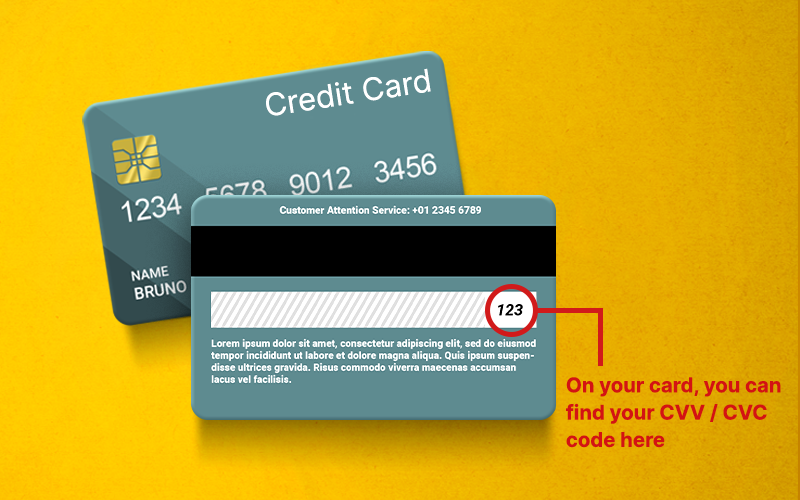When you make offline transactions using your credit card, you need to enter your credit card PIN in order to authenticate your transaction. Similarly, when you make online transactions using your credit card, you need to enter your credit card CVV to verify your identity and complete the transaction.
While a credit card PIN is a 4-digit personal identification number, used to prove your identity and make offline transactions, a credit card CVV is a 3-digit number used to prove your identity while making online transactions.
This blog talks about what a credit card CVV number is, where you can find it and how it is useful.
Credit Card CVV Number- Understanding in Detail
The following points briefly explain the credit card CVV number-
- Full formed as Card Verification Value, CVV is a 3-digit number written on the back side of the credit card
- The CVV is unique to every credit card user
- It must be noted that the CVV is neither derived from the credit card number nor from the expiry date or credit card PIN
- The major purpose of a CVV number is to prevent any fraudulent activities on a credit card
- Major credit card companies like VISA and MasterCard use a 3-digit CVV, but American Express is an exception that uses a 4-digit CVV

In order to process a transaction, the user must enter the CVV correctly, else the transaction will fail. This is because every credit card transaction gets completed on two-factor authentication- one is the correct CVV and the second is the correct CVV. The reason behind this two-factor authentication is that it is actually not feasible for any fraudster to get both the numbers (credit card number and CVV number) right. It is only possible for the owner of the card (one who has the card at the time of performing the transaction) to get both these details right; thereby proving the identity of the owner.
What happens when you enter your CVV on web portals?
While you are strictly advised not to enter confidential details like your credit card PIN on online portals for the purpose of safety. On the other hand, you need to enter your CVV number on web portals to authenticate your transaction.
Now, you might wonder how it is safe to enter CVV on online merchant portals.
Here’s the answer-
Even if you save your credit card information on an online portal, these merchants do not save your card details such as your credit card number, expiry date and/or CVV. You must note that even if the online merchants may save your credit number and expiry date, they do not have the authorization to save your CVV. This is the reason why you are asked to enter your CVV every time you make a transaction even if you have saved your credit card details on the merchant’s online portal.
This proves that a credit card CVV is actually treated as a major factor for security as it acts as an added layer of security, thereby making frauds and online thefts difficult. Hence, it is very important to keep your CVV confidential and not share it with anybody else.
Using your CVV- Points to Consider
As you use your credit card, you will have to enter your CVV every time you make a transaction. However, there are a few points that you should consider while using your credit card-
- Do NOT post pictures of your credit card on social media or any other online platform
- Don’t ever share your CVV with anybody you don’t trust
- Ensure that your laptop/computer is safe and protected with antivirus softwares
- Never respond to any SMSs, emails or calls from individuals claiming to be your bank’s representative, asking for your card details
- Remember, an actual banking official will never ask for your credit card details
- Don’t respond to emails that have uncommon links/images from unfamiliar sources
To Conclude:
A credit card CVV is basically an added layer of security to your credit card. It safeguards your credit account against any fraudulent activity.
Hence, it is important that you be careful and make the most of this additional layer of security and use your credit card wisely. Also, if you are a first-time credit card user, here’s a rule book that you must go through!



